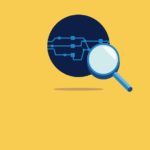Four blockchain solutions to be explored in 2019
According to BBVA Next Technologies’ experts, these are four of the emerging platforms of the blockchain technology to watch out for next year.

This year already represents a turning point for blockchain technology. Through pilot trials and proof of concept, from companies to public entities, consortiums and even governments are immersed in an exploration period to determine blockchain’s potential, understand its limits and define the regulatory framework in which it can operate.
Throughout this trial and error method, some platforms seem to be promising to improve certain processes in different industries; while others have been discarded. BBVA Next Technologies, the software engineering company specialised in emerging technologies, has devoted a space in its 'Technologies Radar 2018' to explore the development of blockchain in recent years and analyse its current challenges and what the next
The authors explain that this experimentation period has served to "strengthen" the technology, but that it has also implied "profound changes and clashes with reality" when proving some of its limits. In particular, it is worth mentioning the following milestones in the last year, the report highlights the "uncontrolled growth" of ICOs, which subsequently have begun to gradually regulate themselves. steps will be to capitalise on it in the future.
The challenges of the third blockchain wave
The first blockchain wave, starring Bitcoin, served almost exclusively to transfer money. Followed by Ethereum, the smart contracts platform, as the most representative example of the so-called "second wave of blockchain", which allowed implementing a more complex logic beyond the transfers on the platform.
With this new generation, known as the third wave, a series of new challenges are identified, including:
- Scalability: the ability to increase transactions per second, while maintaining security.
- Privacy: the need to establish private channels between players.
- Sustainability: the need to move away from the current financing model based on ICOs (through which 'tokens' are generated to provide an initial cash flow), towards a model in which companies receive a steady flow of money over time to be able to be more sustainable
- Governance: those actions to create and update the implicit or explicit rules of a blockchain system. These rules can be code, laws, processes or responsibilities.
- Interoperability: the ability of the different blockchain platforms to communicate with each other and with the infrastructures of the traditional financial system.
The report points to a number of alternatives, or less known, blockchains that have shown potential and that the company considers worth "exploring" or, at least, monitoring their development, since they suggest solutions for these new challenges that come into sight:
Tezos:
Tezos is a smart contracts platform and decentralized apps (DApps) similar to Ethereum that started to operate in 'beta' mode in 2018. Tezos tries to tackle the challenge of achieving a good governance model with its most distinctive feature; its protocol, which includes mechanisms to update the regulations that govern it and implement new innovations. This way, the platform is more flexible to evolve and add improvements, an often-complicated task given the nature of extreme immutability intrinsic to these platforms.
If successful, the report states, "it would be a key step to make the governance of decentralised systems more agile."
Cardano:
It is an open source platform, also designed to create smart contracts, that defines itself as the first sample of the "third generation" of blockchains. According to its creators, Cardano is the third generation since it includes functionalities to improve the scalability, interoperability, governance and sustainability of the previous ones.
The radar highlights that it has established itself as one of the main alternative chains and is currently "a benchmark to be followed" that deserves to be analysed due to its "solid scientific base" and key security improvements and code sophistication.
Enigma:
It is a protocol for the creation of decentralised applications developed by an MIT team (Massachusetts Institute of Technology) and incubated as a spin-off at MIT’s Media Lab. The platform’s purpose is to improve the scalability, security and privacy deficiencies of other blockchains. They have specifically developed what they call 'secret contracts', which allow data to be processed in a secondary software layer that reinforces their privacy. Catalyst, the first application built with it, was launched this year, which is used for cryptocurrency trading.
The report considers that, beyond this first example, it is convenient to "keep track" of the platform since it is "in the vanguard" of blockchain applications "beyond the transfer of value".
IOTA:
This platform, which cannot be strictly considered a blockchain, tries to solve some of the challenges of the third wave of blockchain -such as scalability- with a decentralised application architecture that allows a large number of transactions per second. The platform is designed to manage micro-payments in the internet of things (IoT) and operates with an alternative system in which block mining is not necessary. Its main advantage is that it enables devices with limited computing resources to participate in the network since the transactions are not validated "in blocks" but individually.
BBVA Next Technologies believes that it is necessary to "follow the development" of this technology. Nevertheless, it still contains certain "unknowns" in terms of its design, such as the stability of the system, since it assumes a very high volume of transactions and, until that critical mass is reached, "the network depends on a central coordinator", according to the radar.
Beyond the exploration of platforms, the radar also points out that the ecosystem around this technology is "extremely dynamic" so it is highly important to continue testing proofs of concept (PoC) with both "new" (such as Cardano and Tezos) and existing ones (Ethereum), to test the new changes that are being introduced. The development of distributed applications (Dapps) will also carry on, "their best practices and implications in the paradigm shift". In 2019, the company also considers that following the development of the main consortiums is essential: Hyperledger, R3, Enterprise Ethereum Alliance and, in Spain, Alastria.